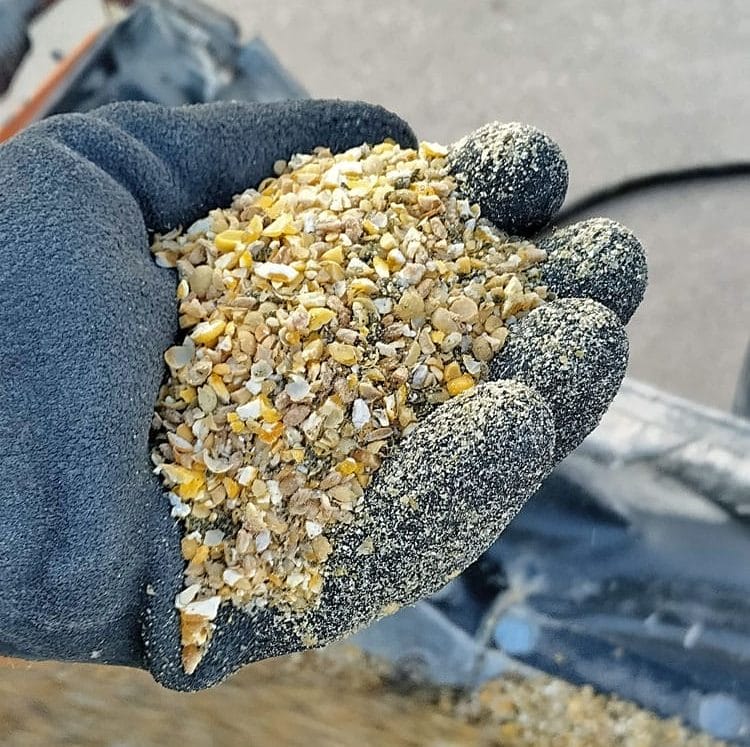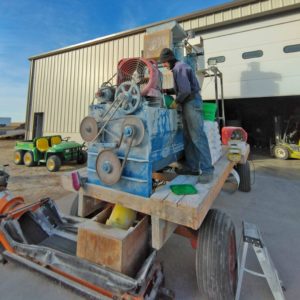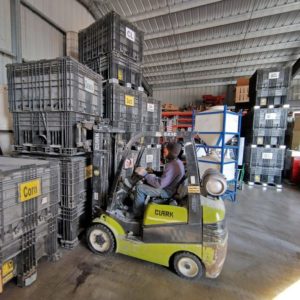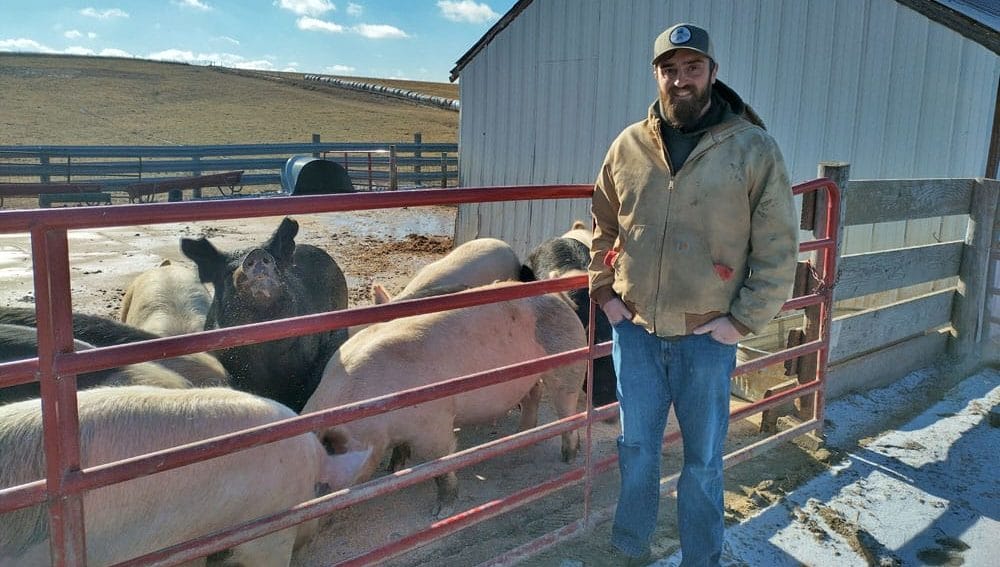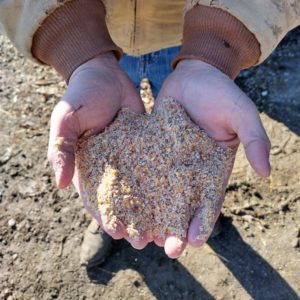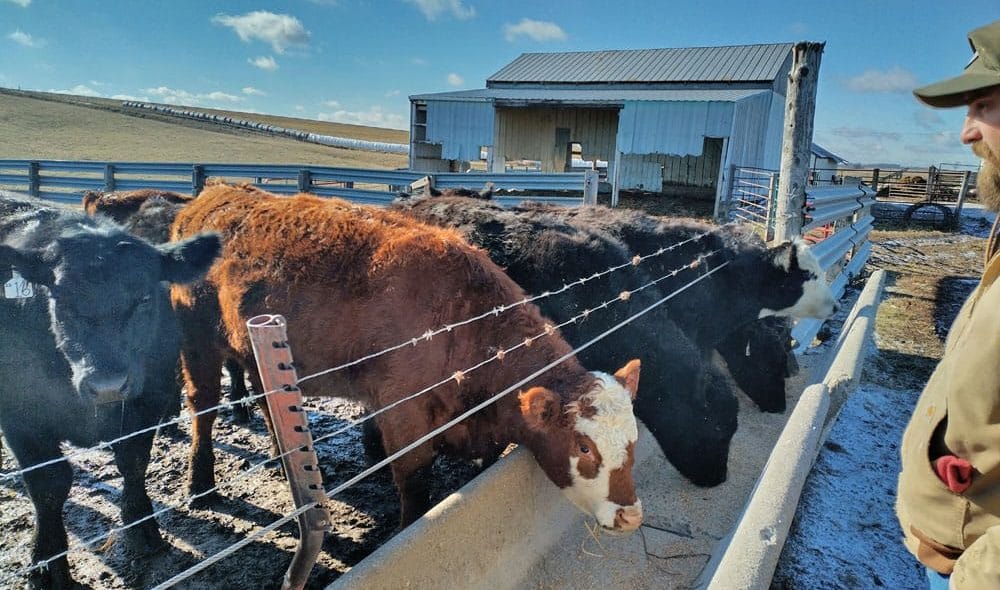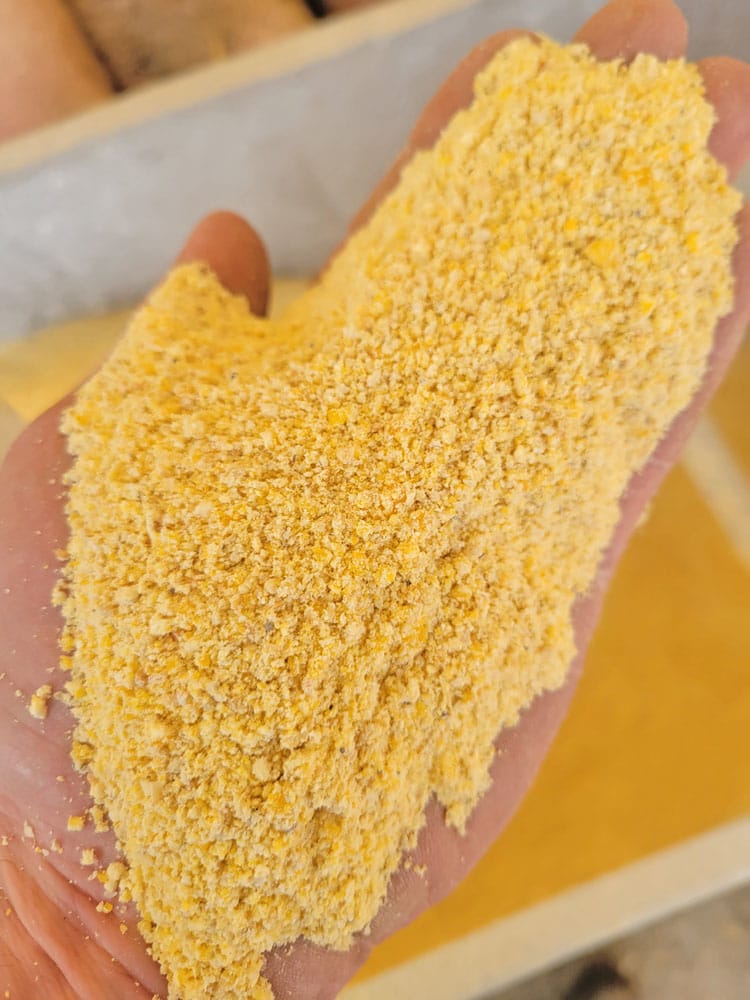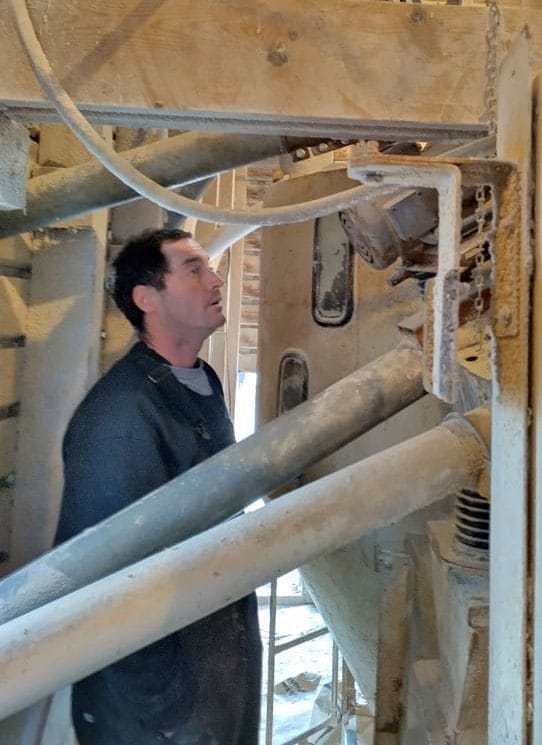It’s a Grind: On-Farm Milling of Livestock Feed
For some farmers, the benefits of milling their own livestock feed outweigh the extra work.
Seeds don’t want to be eaten.
Or, rather, it’s more accurate to say that seeds don’t want to be digested. And they’ve evolved ways to prevent it. Many of the seeds that make up our grain, for instance, are protected by hard exteriors called hulls. Without additional processing, up to 50% of consumed grains can pass through an animal whole, their nutrients unaccessed.
But milling takes extra work and investment. So why do some farmers bother? For many, it comes down to profitability. Others appreciate the flexibility, control and stability grinding their own grain affords.
Still, on-farm milling isn’t for everyone. “If you’ve got access to a local mill that will make you exactly what you want, I’d say, work with them,” says Earl Canfield, who farms at Canfield Family Farms near Dunkerton, Iowa. As he speaks, he’s like a coiled spring oscillating between stillness and action. “But that’s getting increasingly hard to find.” Earl would know. Besides milling grain for his family’s chickens, and occasionally for pigs, he runs an on-farm mill and direct-markets 12,000-15,000 bags of feed per year.
Earl’s farm lies just off Canfield Road. His family has been farming here since the 1850s. For much of that time, most farms with livestock milled their own feed. Up until the 1970s, Earl remembers doing the same with his dad using oats they grew. But when livestock left the farm, so did the oats, and the milling stopped.
The Why
Forty years later, in 2016, Earl decided to diversify his crop rotation with oats once again. He knew the soil health benefits of an extended rotation would take years to fully manifest. To enable this long-term investment, he wanted to find a way to make his oats profitable now. He turned first to the food-grade oat market. But Earl’s buyer backed out unexpectedly, and the price to sell into the feed market didn’t come close to matching his costs.
Searching for a way to still make money from his oats, Earl and his wife quickly pivoted. “We said, ‘We really got nothing to lose. Let’s just probe the waters of direct-marketing and see what we find.’” What they found was a demand for premium locally milled feed.
In 2024, Earl says over 90% of the farm’s revenue was from value-added products like feed, cracked grains and baled hay. Initially, the business was aimed just at marketing their oats. But milling has given them an avenue for their other crops too – and it’s made their income more stable in an otherwise volatile grain market.
Ryan Wallace, of RAW Farms near Luzerne, Iowa, also started milling to fully use his diversity of crops. He and his wife, Ashley Wallace, grow a range of certified organic small-grain crops, such as wheat, oats and sorghum as well as corn and soybeans. They also raise pastured pigs, cattle, sheep and chickens. “If we have the markets for the livestock,” he says, “we can make more profit putting [the grain] through the livestock and letting it walk off the farm.”
By feeding their animals organic feed processed on the farm, the livestock earn a better value than the grains would on their own. That makes their row crops profitable. In addition to direct marketing, the Wallaces sell through contracts with Niman Ranch and 99 Counties, which pay farmers premium prices for following strict protocols for animal welfare, feed requirements, land stewardship and other criteria. These livestock sales, which started just a couple of years ago, have let Ryan drop his job in town and farm full-time. The amount of ground he’s managing hasn’t changed much, but the livestock have become the value-added product for his grains.
“If I were to get rid of all the livestock and just sell the cash crop,” he says, “we would not be able to make a living off the farming operation.”
Using his livestock as his main source of income, Ryan says he’s better able to pencil out cashflow for the year and is less reliant on volatile grain markets. Plus, he simply likes livestock more. “I’ll always have nostalgia for corn,” Ryan says. “But I’m intrigued by the old way of farming – that livestock was the way they made the farm operate. They farmed to raise the livestock.”
Brice Hundling, of Hundling Family Farms near Breda, Iowa, also has a diverse rotation that influences what he feeds his equally diverse mix of livestock. Like Ryan, he also raises pigs for Niman Ranch, as well as cattle, chickens, turkeys, sheep and goats.
Knocking on the side of the bins, Brice describes how the corn, bean meal, oats and pre-mix are augured into the mill, housed in the old corn crib. Grain dust from grinding 2-3 tons of feed per day has drifted onto the floor, walls and soaring rafters of the small space, coating surfaces in the fine yellow dust ubiquitous with corn milling.
Brice knows it’s a clean dust, though. It’s physically light, not sticky from oily residues or contaminated with dirt. And because it comes from crops he raised, he knows exactly what’s in it. That’s important to him, having worked at co-ops where he wasn’t always impressed with the quality control he saw. Plus, grinding his own feed adds a layer of biosecurity. “I know exactly what I am putting in my grinding bin,” he says. “I’m the one maintaining the quality control for my pigs.”
On-farm milling also adds flexibility. With limited storage space and animals of different ages (and thus feed requirements) at any given time, Brice needs multiple feed mixes at hand that change through the year. Because of the relatively small amounts he needs, ordering in bulk from an outside miller would make delivery costs unworkably expensive. With on-farm milling, Brice is able to make feed as he needs it.
Before You Start
If you’re thinking about making your own livestock feed, Brice, Ryan and Earl offer the following advice.
Brice strongly recommends using an automated electric mill to save time and money. Before he got one, he was burning upwards of 50 gallons of diesel per month on a tractor-powered grinder mixer to feed half as many pigs. With the electric mill, his bill is only $150 per month for double the hogs. He can also set it and walk away. “I know what I need for feed the next day,” Brice says. “I input ‘6,000 pounds of ration number two,’ hit enter and then come in the house for the night.”
Ryan advises farmers to “really, really know your numbers.” By fully understanding expenses and income – how much feed the hogs or cattle take – you’ll know if one enterprise is subsidizing another and where to trim excess. He also suggests finding ways to save money on infrastructure. Using creative arrangements to share equipment, Ryan has kept his start-up costs low.
Speaking also of finances, Earl says, “If you’re not going to pay someone else to do it [mill grains], you’ve got to be willing to absorb the cost to be able to do it yourself.” He points to the financial cost of buying and maintaining equipment, which can be sizeable. There’s also the labor cost of the extra time spent processing grain – which at -20 degrees and windy (Earl grinds on a wagon he rolls outside), can feel quite high. Earl also suggests using top-quality supplements (he gets his from Fertrell) and using roasted soybeans instead of bean meal. Finally, he advises paying attention to auctions and sales. By doing so, Earl and his family have pieced together their milling setup over the years while saving money.
Even with the hard work and added complexity, Earl finds milling feed rewarding. “We’re very grateful,” he reflects in a moment of stillness between speeding in his forklift and scaling his equipment. “I enjoy what I do. It’s allowed us to continue making a living here on the farm and create some new opportunities, hopefully for our kids, but we’ll see what the future holds.”

